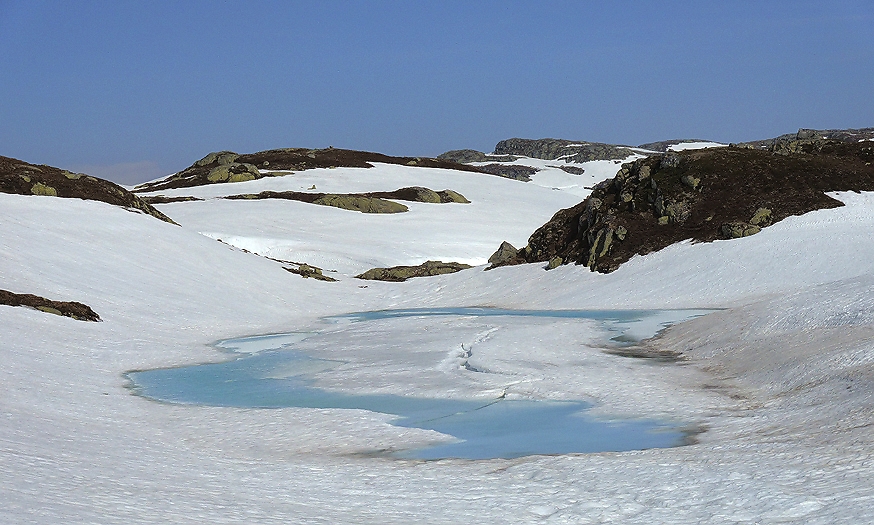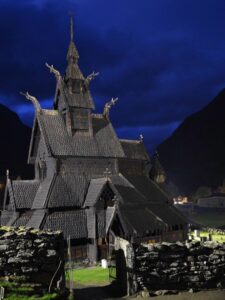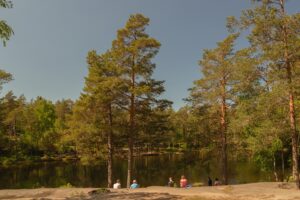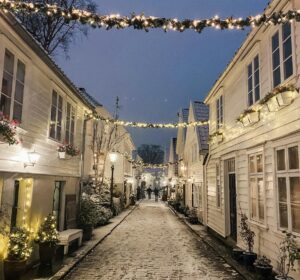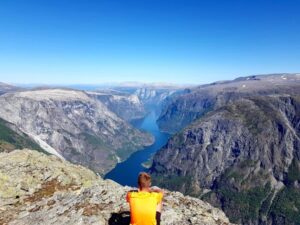Discover the Snow-Capped Peaks of the Hardanger Plateau
Nestled in the heart of Norway, the Hardanger Plateau, or Hardangervidda, is a breathtaking expanse of natural beauty. This vast mountain plateau is the largest in Europe, offering a unique blend of stunning landscapes, rich history, and diverse wildlife. Whether you’re an avid hiker, a nature enthusiast, or simply seeking a peaceful retreat, the Hardanger Plateau promises an unforgettable experience.
What to See
The Hardanger Plateau is renowned for its snow-capped peaks and expansive vistas. As you traverse the plateau, you’ll encounter a variety of landscapes, from rolling hills and serene lakes to rugged mountains and lush valleys. One of the most iconic sights is the Hardangerjøkulen glacier, a massive ice cap that dominates the skyline. For those interested in wildlife, the plateau is home to one of Europe’s largest herds of wild reindeer, as well as a variety of bird species, including the majestic golden eagle.
The plateau is also dotted with charming mountain lodges and traditional Norwegian cabins, offering a glimpse into the region’s cultural heritage. Don’t miss the opportunity to visit the Hardangervidda National Park Center, where you can learn more about the area’s unique ecosystem and history.
A Bit of History and Interesting Facts
The Hardanger Plateau has a rich history that dates back thousands of years. It has been a vital hunting ground for the indigenous Sami people, who have lived in harmony with the land for generations. The plateau’s strategic location also made it an important route for travelers and traders throughout history.
One interesting fact about the Hardanger Plateau is its role during World War II. The area was the site of the famous Norwegian heavy water sabotage, a critical operation that helped prevent Nazi Germany from developing nuclear weapons. This daring mission is a testament to the resilience and bravery of the Norwegian resistance fighters.
Another fascinating aspect of the plateau is its geological significance. Formed during the last Ice Age, the Hardanger Plateau is a prime example of glacial erosion, with its unique landscape shaped by the movement of ice over millennia.
How to Get There and Tips for First-Time Visitors
Reaching the Hardanger Plateau is relatively straightforward. The nearest major city is Bergen, which is well-connected by air, rail, and road. From Bergen, you can take a scenic train ride to the town of Voss, followed by a bus or car journey to the plateau. Alternatively, you can drive directly from Oslo, which takes approximately 4-5 hours.
For first-time visitors, it’s essential to come prepared for the unpredictable weather. The plateau’s high altitude means that conditions can change rapidly, so pack warm clothing, waterproof gear, and sturdy hiking boots. If you’re planning to explore the area on foot, consider hiring a local guide who can provide valuable insights and ensure your safety.
Accommodation options range from cozy cabins and lodges to campsites for those who prefer a more rustic experience. Be sure to book in advance, especially during the peak tourist season from June to August.
In summary, the Hardanger Plateau is a must-visit destination for anyone seeking to experience the raw beauty of Norway’s natural landscapes. With its stunning scenery, rich history, and abundant wildlife, it’s a place that will leave a lasting impression on all who visit.
